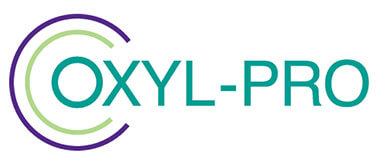Waterborne diseases come from contaminated water supplies. In these water sources, pathogenic microorganisms can grow and reproduce.
These microorganisms include:
- Bacteria
- Viruses
- Intestinal parasites, and
- Protozoa.
They cause various waterborne diseases, some of which can be fatal.
Here, we look at these common waterborne diseases, what their symptoms are, and who is most susceptible to them.
How are Waterborne Diseases Transmitted?
People catch waterborne diseases by using water infected with disease-causing pathogens.
Typically, this involves everyday uses of water, such as drinking, food preparation and washing clothes.
Transmission is often more likely in developing countries and especially in rural areas, where people do not have access to treated water supplies. Also, in some of these areas, access to water is very scarce, and people simply cannot afford either the time or resources to decontaminate the water they depend on.
The most common waterborne diseases are:
- Diarrhoea
- Cholera
- Typhoid
- Hepatitis A
- Amoebiasis
- Viral gastroenteritis
- Cryptosporidiosis
- Shigellosis.
Diarrhoea
This is the most common of all waterborne diseases. It is spread through contaminated water, or food. Symptoms include dehydration, dizziness, pale skin colouring and even loss of consciousness. Some sufferers experience bloody stools too.
Generally it lasts up to two weeks. In developed countries it can clean up after a few days, but may require treatment. In developing countries it can prove fatal. Globally, most victims from diarrhoea are children under the age of five.
Cholera
Cholera is a bacterial disease, mainly caused by vibrio cholerae bacteria. It spreads through consumption of contaminated water or food. It should be easily preventable and treatable, but it can also prove fatal, with a high mortality rate for a waterborne disease.
Symptoms of cholera include diarrhoea, vomiting, fever and abdominal cramps. The risk of dying from it increases if the sufferer already has some sort of deficiency of their immune system, or if they are malnourished. This is one of the reasons why cholera can be so dangerous in developing countries.
Typhoid
Humans catch typhoid fever from salmonella typhi bacteria, transmitted in contaminated water. Symptoms of typhoid include headache, loss of appetite, fatigue, fever, nausea, constipation, loss of body weight and abdominal rash.
This bacterial infection can be potentially life-threatening and again, is common in developing countries, especially where there is poor treatment of sewage and water systems.
Hepatitis A
Hepatitis A is a viral infection, caused by a virus, which affects the liver. Usually it comes from contaminated water or food, or from close contact with someone who is already infected with it.
Symptoms include fatigue, sudden nausea or vomiting, abdominal discomfort or pain, loss of appetite, dark urine, low grade fever and joint pain. There can also be jaundice, seen in yellowing of the skin of the whites of the eyes.
There is the risk of severe complications if treatment is not rapid.
Amoebiasis
This is caused by a protozoan organism, the parasite entamoeba histolytica. The parasite exists as cysts in food and can exist in contaminated soil. It is most common in tropical climates where there is poor sanitation.
Symptoms include watery stools, stomach pain and cramps.
Viral Gastroenteritis
This is an intestinal viral infection, which is caused by consuming contaminated water or food. You can also catch it from someone infected with it.
Symptoms include vomiting, abdominal cramps, nausea or vomiting.
Cryptosporidiosis
Cryptosporidiosis is caused by cryptosporidium parasites, which you can find in water, as well as soil, food and on contaminated surfaces. These parasites have a life cycle that can complete in both humans and animals.
Symptoms include watery diarrhoea, stomach cramps or pain, nausea and vomiting, fever, lack of appetite and weight loss.
Shigellosis
Shigellosis is a disease of the intestine, caused by the shigella family of bacteria. Some of these bacteria are present in the UK, while others may infect people due to overseas travel. Infection is spread by water or food contaminated with human faeces.
Symptoms of shigellosis include fever, diarrhoea and stomach cramps.
Who Should Be Extra Vigilant About Waterborne Diseases?
On a worldwide scale, by far the largest majority of people who suffer from waterborne diseases are children.
Waterborne diseases often come about due to a combination of poor hygiene and weak immunity, and many of these diseases are life-threatening.
According to the World Health Organisation, WHO, around 844 million people lack basic drinking water, and at least 2 billion rely on water sources that are contaminated with faeces.
Anyone with a weak immune system should ensure that their source of drinking water is safe.
People who are old, or who have recently had an organ transplant should also be extra vigilant.
Water supplies should not be exposed to pesticides or harsh chemicals, and when relying on bottled water, this should be kept in a dry place, refrigerated or at room temperature, and away from direct sunlight.
If there are any doubts about the purity of the water supply, boil drinking water regularly.
How Do You Prevent Waterborne Diseases?
The most effective way of preventing waterborne diseases is by treating water supplies.
Effective water treatment should involve a disinfectant that can kill bacteria rapidly, but will have no odour, taint or taste, which could affect the quality of the water once treated.
A disinfectant for water treatment should contain no toxic metals, to ensure it is suitable for drinking water.
One vital stage of preventing waterborne diseases is to ensure that the pipework carrying water supplies is free of biofilm. If you apply a disinfectant to remove biofilm, you remove a crucial source of bacteria for the microorganisms that cause harmful diseases.
Oxyl-Pro is a unique, stabilised peroxide disinfectant with multiple uses, including water treatment. It is effective against bacteria, fungi, moulds and yeasts.
For more information about the Oxyl-Pro product range, please complete our contact form, call us on +44 1606 851 782, or email enquiries@oxylpro.com

